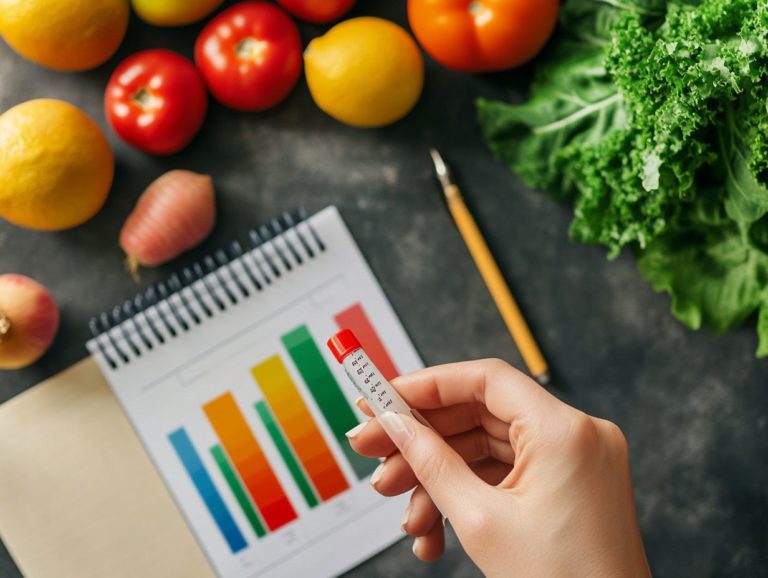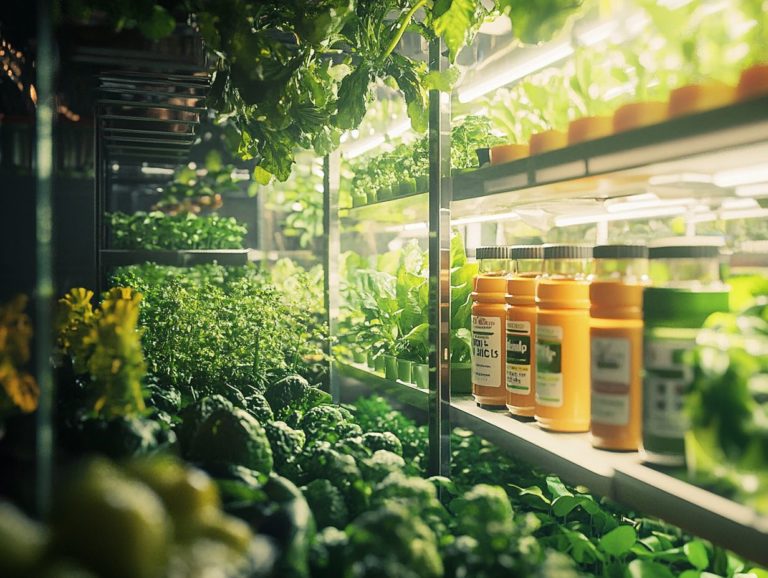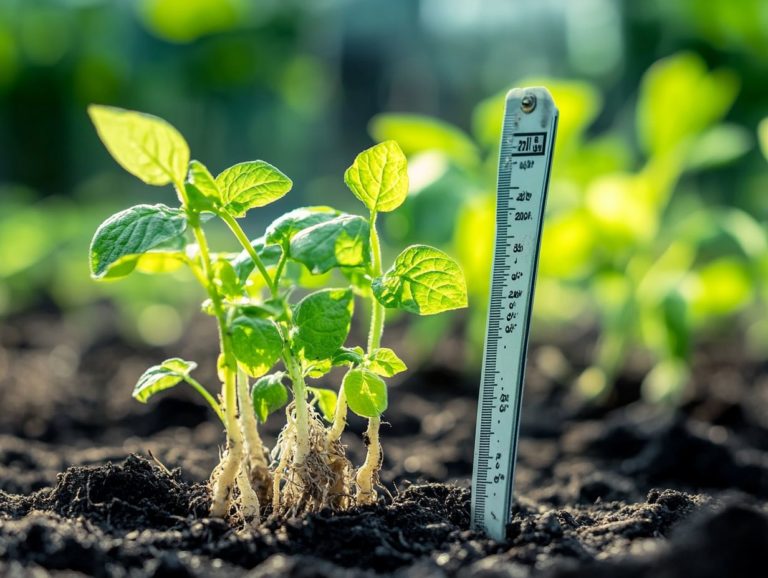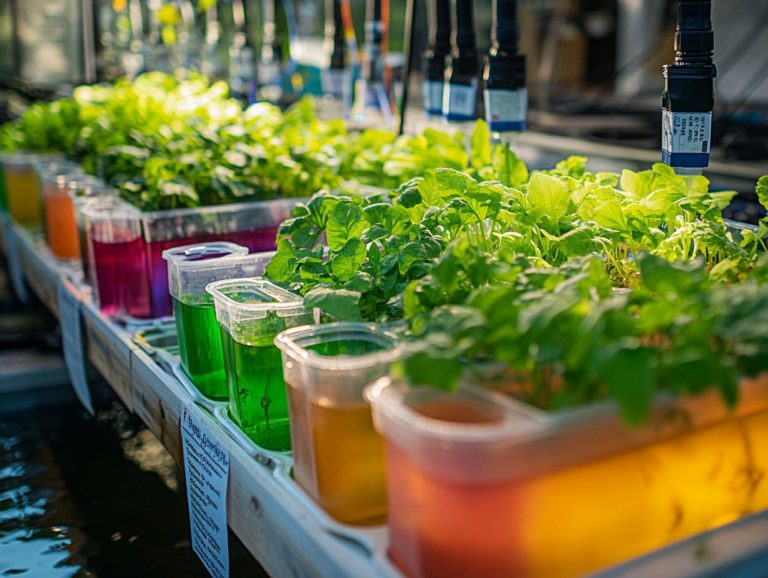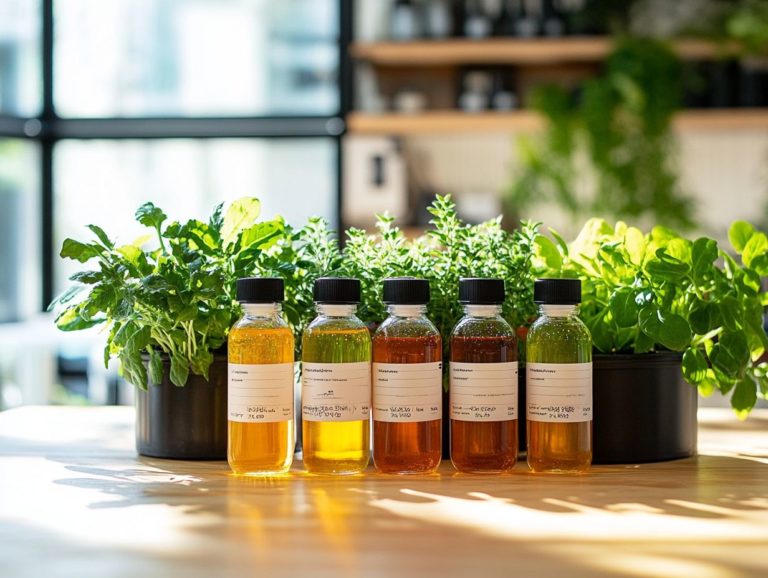Essential Nutrients for Hydroponic Success
Hydroponics is transforming your approach to gardening and plant cultivation. By growing plants without soil, you can tap into the potential of nutrient-rich water to nurture healthier, faster-growing crops.
This article delves into the fundamentals of hydroponics, highlighting the vital nutrients your plants need to thrive. It breaks down the essential macronutrients and micronutrients, guides you in recognizing and addressing common deficiencies, and offers insights on selecting and supplementing the right nutrient solutions.
Whether you’re an experienced hydroponic aficionado or a curious newcomer, get ready to unlock the secrets of successful hydroponic gardening!
Contents
- Key Takeaways:
- The Basics of Hydroponics
- Key Nutrients for Hydroponic Plants
- Understanding Plant Nutrient Requirements
- Common Nutrient Deficiencies in Hydroponic Systems
- Choosing the Right Nutrient Solution
- Supplementing Nutrients in Hydroponic Systems
- Frequently Asked Questions
- What are essential nutrients for hydroponic success?
- Why are essential nutrients important for hydroponic success?
- How do I know which essential nutrients my plants need?
- What happens if my plants don’t get enough essential nutrients?
- Can I provide too much essential nutrients to my plants?
- How do I ensure a balanced mix of essential nutrients for hydroponic success?
Key Takeaways:
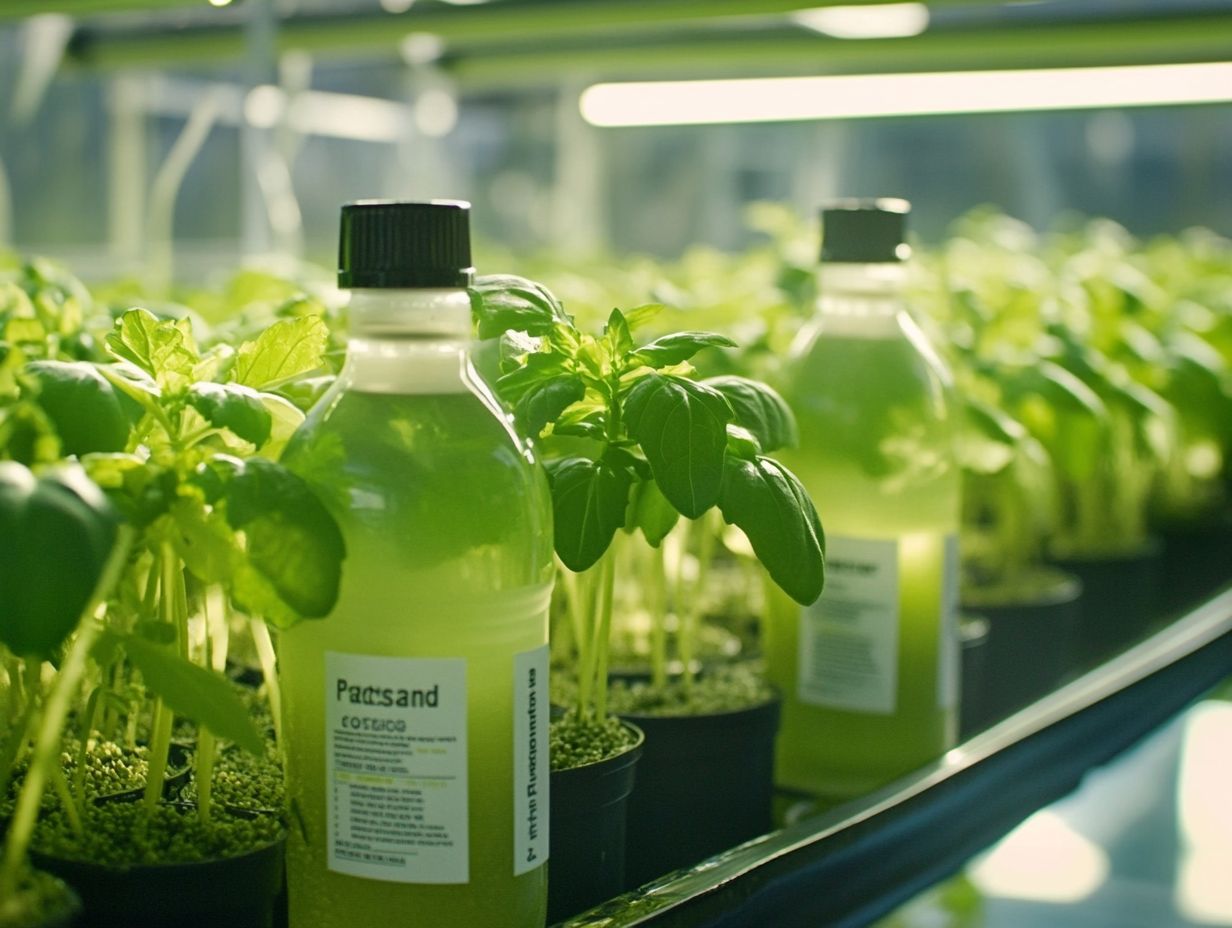
- Understanding the basics of hydroponics is crucial for the successful growth of plants without soil.
- Macronutrients and micronutrients are essential for providing plants with the necessary nutrients for growth and development.
- Regularly monitoring and adjusting the nutrient solution is important to meet the specific needs of the plants in your hydroponic system.
The Basics of Hydroponics
Hydroponics represents a groundbreaking agricultural practice that enables you to cultivate plants without the need for soil, using nutrient solutions delivered directly to the roots. This method uses systems like nutrient film techniques and deep-water float systems for efficient crop production that meets the rising demands of urban farming and sustainable agriculture.
Success in hydroponics depends on balancing essential nutrients for leafy greens and high-quality water to ensure optimal health and growth for your plants. In this guide, you will explore the fundamental concepts of hydroponics and discover its many advantages for modern gardening enthusiasts.
What is Hydroponics?
Hydroponics is a sophisticated method of growing plants without soil, relying instead on nutrient solutions that deliver essential elements directly to the roots. This innovative approach grants you precise control over nutrient intake, allowing your plants to flourish faster and healthier than they would in traditional soil cultivation.
In a hydroponic system, the roots are submerged in water enriched with minerals, creating an optimal environment for growth. The nutrient solutions provide critical elements like nitrogen, phosphorus, and potassium, all essential for robust plant development. For a deeper understanding, refer to hydroponic nutrients: a beginner’s guide. You can utilize various soilless media, such as rock wool, clay pellets, and coconut coir, which support root structures and help retain moisture.
Many popular plants, including tomatoes, lettuce, herbs, and peppers, thrive in hydroponic systems. This highlights the versatility and efficiency of this cultivation method, making it an attractive option for anyone looking to elevate their gardening game.
Key Nutrients for Hydroponic Plants
Understanding the essential nutrients for hydroponic plants is key to achieving optimal growth and health. These plants depend on a balanced supply of macronutrients and micronutrients, including calcium, nitrogen, and phosphorus, to truly thrive.
In hydroponic systems, crucial nutrients like nitrogen, phosphorus, potassium, calcium, magnesium, and trace elements are fundamental to plant nutrition. Understanding the role of micronutrients in hydroponics is essential. By maintaining appropriate levels of these nutrients, you not only promote vigorous plant growth but also mitigate the risk of nutrient deficiencies and imbalances that can adversely impact yield and quality.
This section will explore the various types of nutrients necessary for successful hydroponic gardening and highlight their significance, including insights from understanding hydroponic nutrient solutions.
Macronutrients and Micronutrients
Macronutrients, such as nitrogen, phosphorus, potassium, calcium, and magnesium, are essential in larger quantities for your plants’ growth. Micronutrients like iron, boron, and manganese, though needed in smaller amounts, are equally vital for maintaining overall plant health.
Understanding the specific roles of these nutrients is key to optimizing plant development. For example, nitrogen is crucial for protein synthesis and chlorophyll production, directly impacting photosynthesis efficiency. Phosphorus plays a pivotal role in energy transfer and root development. Meanwhile, potassium helps regulate water uptake and enzyme activation. Calcium is essential for cell wall structure and stability, and magnesium is vital for chlorophyll formation, enhancing photosynthetic capabilities.
Micronutrients, despite their tiny quantities, facilitate critical processes such as nitrogen fixation and photosynthesis, highlighting their importance. In hydroponic systems, you can precisely balance nutrient solutions to meet the unique needs of various crops, ensuring healthy growth and maximizing yields.
Understanding Plant Nutrient Requirements
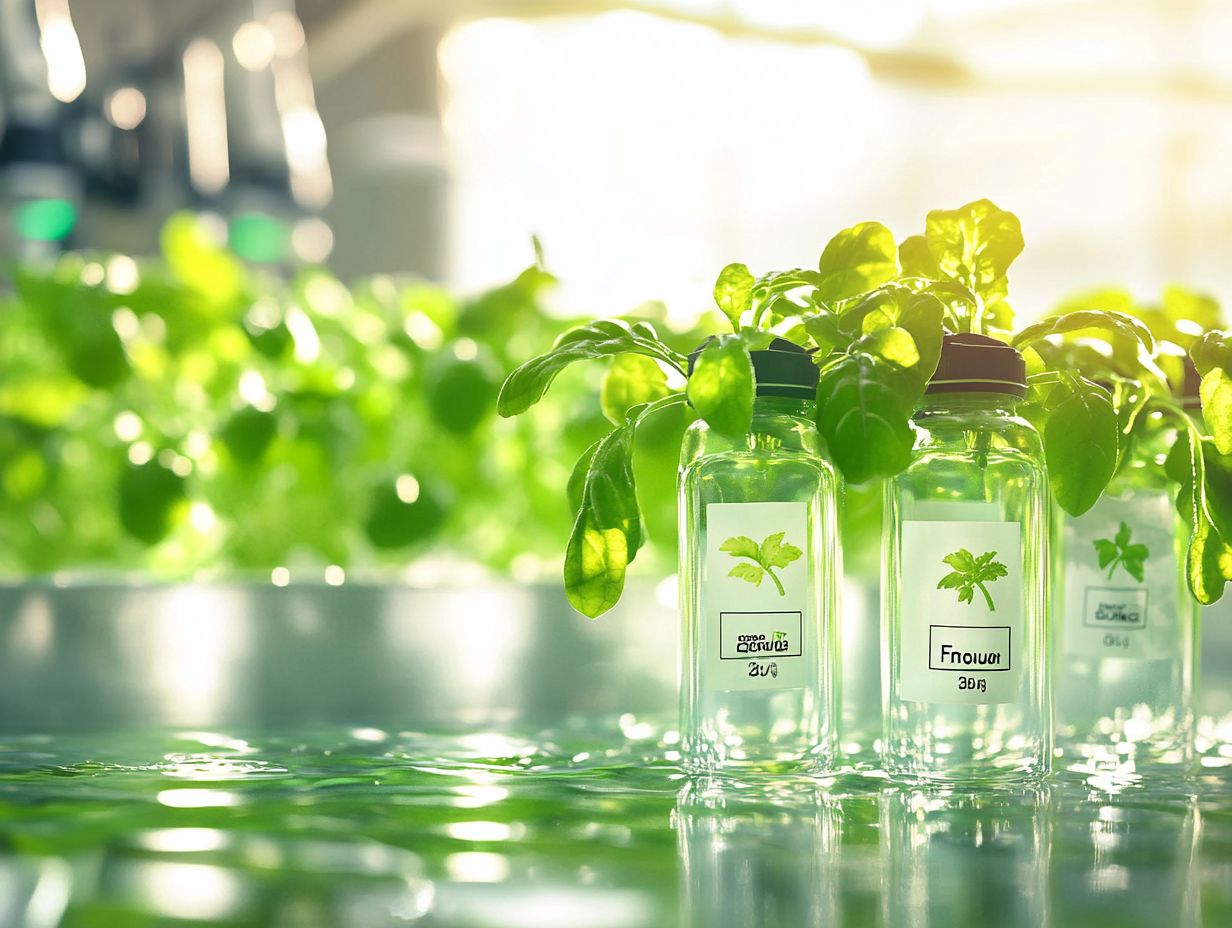
A comprehensive understanding of plant nutrient requirements is essential for your success in hydroponic gardening. This knowledge gives you the power to monitor nutrient status and swiftly address any deficiencies that may arise.
Each plant species presents unique nutrient needs that evolve throughout its growth stages, demanding careful nutrient measurements and testing on your part. By routinely assessing pH levels and electrical conductivity a measure of how well a solution conducts electricity, indicating nutrient levels you can ensure optimal nutrient absorption while avoiding complications like nutrient antagonism, where one nutrient interferes with the uptake of another, and burn.
Let s explore effective methods for determining nutrient requirements for your hydroponic plants.
How to Determine Plant Needs
Determining a plant’s nutrient needs requires a thoughtful blend of visual assessments, nutrient testing, and careful calculations based on growth conditions and plant species.
You can embark on this journey by keenly observing symptoms like leaf discoloration, stunted growth, or wilting, which may signal specific nutrient deficiencies. If you notice yellowing leaves, it often indicates a nitrogen shortage. On the other hand, purpling leaves might suggest a phosphorus deficiency.
Conducting soil tests will give you a precise analysis of nutrient levels, guiding you in making amendments that align with your plant s life cycle.
As plants progress through various growth stages, such as vegetative or flowering, their nutrient requirements can change, demanding calculations that factor in environmental influences like pH and moisture levels. Understanding the interactions between nutrients such as calcium and magnesium or nitrogen and potassium will deepen your insight and lead to healthier, more vibrant plants.
Common Nutrient Deficiencies in Hydroponic Systems
Discover the key nutrient deficiencies that can hold your plants back! Understanding common nutrient deficiencies in hydroponic systems is crucial for sustaining optimal plant health and achieving impressive yields. When deficiencies occur, they can manifest through visible symptoms that hinder growth.
Imbalances in essential nutrients, like calcium and nitrogen, can lead to various issues think stunted growth, yellowing leaves, and inadequate fruit development. Recognizing and addressing these challenges promptly is vital for your success in hydroponic gardening.
This section will delve into the most prevalent deficiencies and the effective solutions you can implement to resolve them.
Start monitoring your plants today for a thriving hydroponic garden!
Signs and Symptoms of Deficiencies
Identifying the signs and symptoms of nutrient deficiencies in your hydroponic plants is crucial for timely intervention. These indicators can vary based on which nutrient is lacking. For instance, you might notice calcium deficiency as blossom end rot in your tomatoes. Meanwhile, nitrogen deficiency could cause your leaves to turn yellow.
Potassium deficiency can lead to weak stems and premature leaf drop, making it a challenge to maintain plant stability and overall health. Additionally, magnesium deficiency might present as yellowing between leaf veins, where the leaves turn yellow while the veins remain green.
Recognizing these symptoms and understanding their implications is essential for achieving optimal yields. To prevent deficiencies, implement a balanced nutrient solution, regularly monitor pH levels, and conduct water tests. For the best results, consider using the best nutrient brands for hydroponic gardens. This way, you ensure your plants receive all the essential nutrients they need for robust growth.
Choosing the Right Nutrient Solution
Selecting the right nutrient solution is pivotal in hydroponic gardening, as it profoundly influences plant growth and overall yield. A well-balanced supply of essential nutrients ensures that your plants thrive and helps prevent complications like nutrient burn.
Since different plants have unique nutrient requirements, it is crucial to choose a nutrient solution specifically tailored to their needs. This section will guide you through key factors to consider when determining the most suitable hydroponic nutrient solutions for your garden.
Factors to Consider
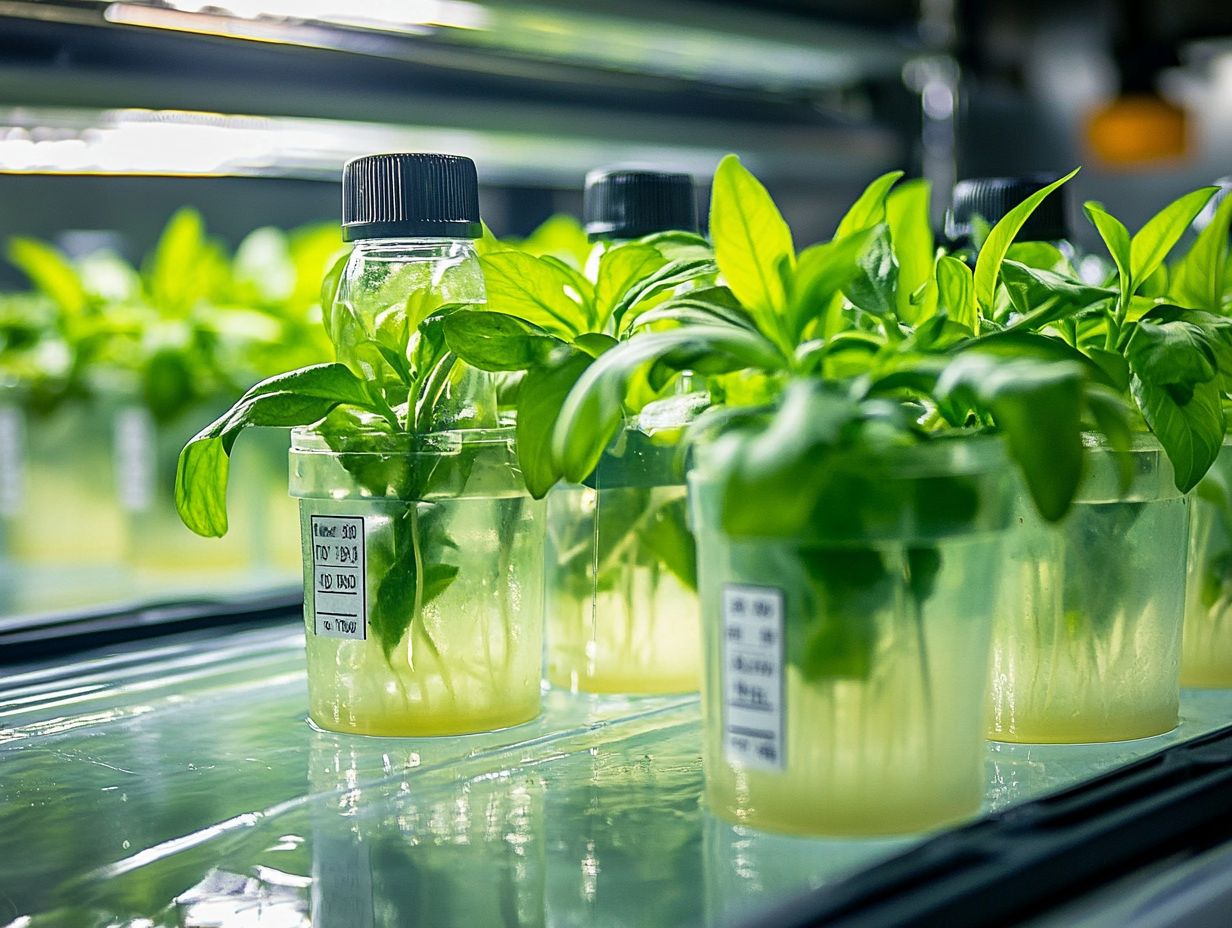
When choosing a nutrient solution for your hydroponic system, consider the following factors:
- Specific nutrient requirements of your plants
- Quality of your water
- Desired growth rate
- Nutrient solutions in supporting plant nutrition
Understanding the distinct needs of various plant species is essential, as different varieties absorb nutrients at varying rates and have specific growth stages that require customized formulations. For instance, seedlings typically require higher phosphorus levels to support root development, while mature plants may need increased potassium during flowering to flourish, ensuring adequate macronutrients and micronutrients are available.
The quality of the water you use can significantly impact nutrient availability. Factors like pH levels and electrical conductivity play crucial roles in nutrient composition. For instance, understanding the role of nitrogen in hydroponic growth is vital for optimizing plant health and avoiding nutrient imbalances. Pay close attention to potential nutrient antagonism between nutrients that could impede growth if certain elements are over- or under-supplied.
Supplementing Nutrients in Hydroponic Systems
Supplementing nutrients in hydroponic systems is vital for maintaining peak plant health and maximizing growth potential. As plants continuously absorb nutrients from the solution, consistent replenishment is necessary to prevent nutrient deficiencies and avoid nutrient burn.
Regularly monitoring nutrient levels allows you to adjust your solutions according to the specific needs of your plants and the prevailing growth conditions, ensuring optimal nutrient absorption. In this section, you’ll discover the best times and methods for effectively supplementing nutrients in your hydroponic systems and ensuring nutrient status remains optimal, with insights from exploring hydroponic nutrient formulations.
When and How to Add Nutrients
Knowing when and how to add nutrients to your hydroponic system is key. This helps ensure that your plants absorb nutrients effectively and grow healthy.
To achieve the best results, follow a structured schedule for nutrient application tailored to your plants’ growth stage and unique nutrient needs. For instance, during the early vegetative stage, a higher concentration of nitrogen can promote lush foliage. In contrast, the flowering phase may benefit from increased phosphorus and potassium, while being aware of nutrient deficiency symptoms in hydroponics.
Watch for plant symptoms like yellowing leaves or stunted growth; these can provide valuable insights into potential nutrient deficiencies or excesses. Regularly testing your nutrient solution allows you to fine-tune the mix, ensuring a balanced diet that nurtures strong development and maximizes yields. To learn more about maintaining nutrient balance, check out this guide on how to avoid nutrient imbalance in hydroponics while keeping track of nutrient interactions.
Frequently Asked Questions
What are essential nutrients for hydroponic success?
Essential nutrients are specific elements needed for plant growth. This includes macronutrients like nitrogen, phosphorus, and potassium, as well as micronutrients such as calcium, magnesium, and iron.
Why are essential nutrients important for hydroponic success?
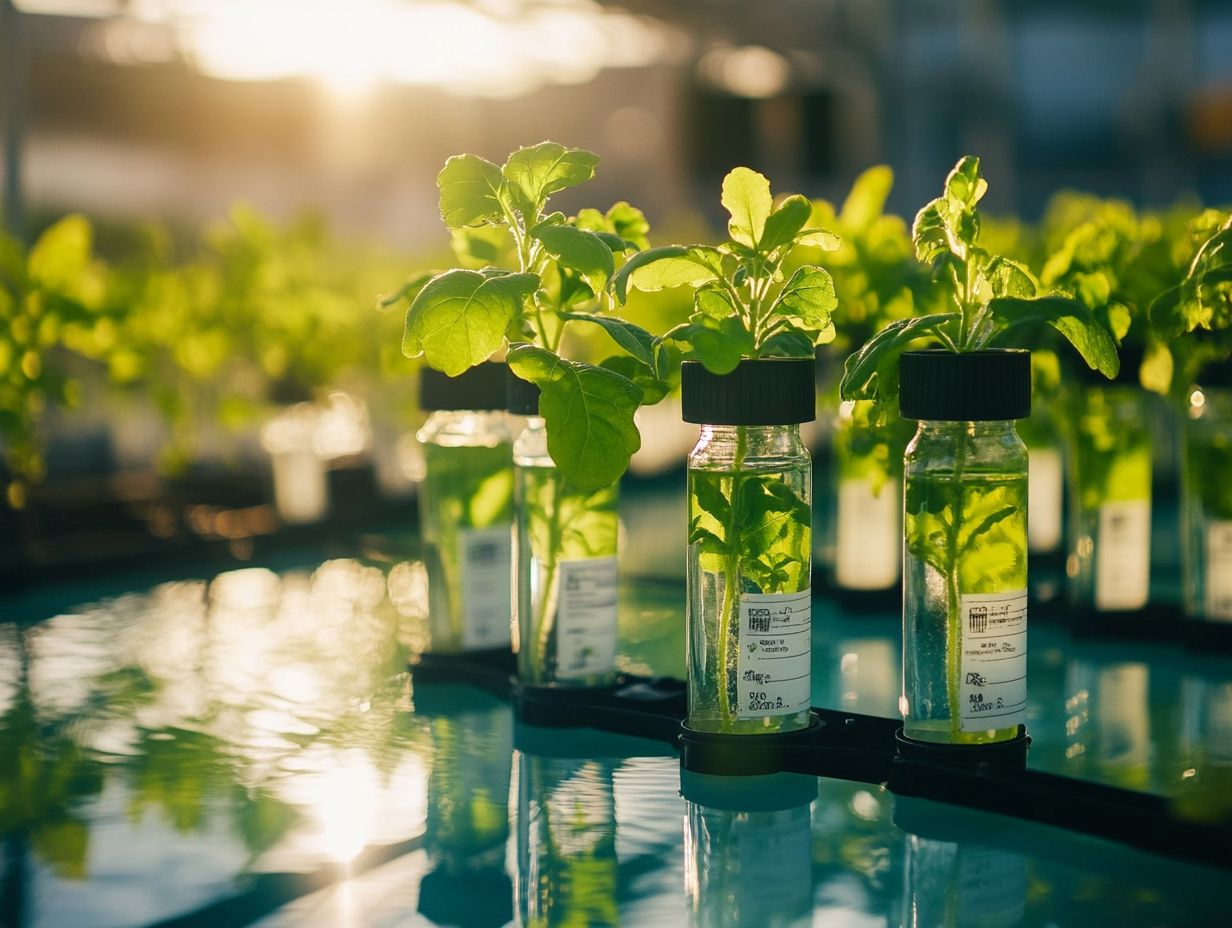
In traditional soil-based gardens, plants obtain essential nutrients from the soil. However, in hydroponics, the nutrient solution must provide all necessary replenishments. Without these essential nutrients, plants cannot grow properly or produce a healthy harvest, emphasizing the need for effective nutrient monitoring and management.
How do I know which essential nutrients my plants need?
Each plant has specific nutrient requirements, so it’s important to research the needs of the particular plants you are growing, like tomatoes and lettuce. You can also purchase pre-made nutrient solutions that contain a balanced mix of essential nutrients for various plants.
What happens if my plants don’t get enough essential nutrients?
If your plants do not receive enough essential nutrients, they will show signs of deficiency, such as stunted growth, yellowing leaves, and poor fruit or flower production. Monitor your plants and adjust nutrient levels accordingly to prevent these issues.
Can I provide too much essential nutrients to my plants?
Providing too much of a certain nutrient, especially nitrogen, can harm your plants and cause nutrient burn, affecting their overall health. It’s important to follow the recommended nutrient levels for your specific plants and regularly test the nutrient solution to avoid overfeeding.
How do I ensure a balanced mix of essential nutrients for hydroponic success?
To ensure a balanced mix of essential nutrients, regularly test the nutrient solution and make adjustments. Consider the nutrient ratios and soluble salts present. You can also use a nutrient calculator or pre-made nutrient solutions to maintain a proper balance for your plants.

